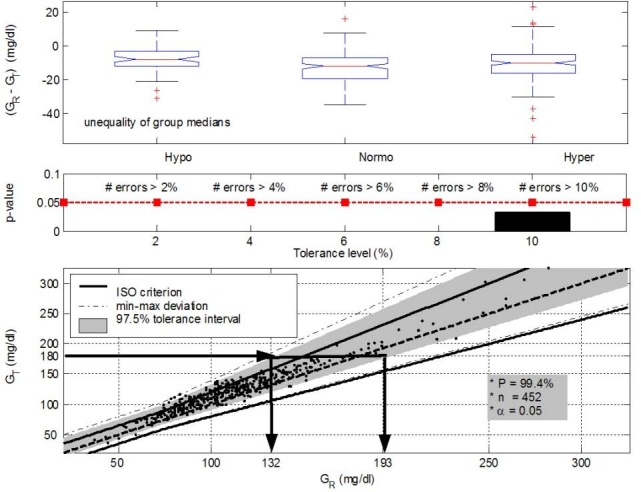Figure 4.

GLYCENSIT analysis for the HemoCue® sensor. Although the used Kruskal–Wallis test indicates nonpersistent measurement behavior (p = 0.0021 < 0.05), the top panel (phase 1) shows that this sensor device approaches a persistent (overestimated) measurement behavior. Median measurement errors for the hypo-, normo-, and hyperglycemic range are –8, –12, and –10 mg/dl, respectively. Many errors against the ISO criterion are observed, as presented in the middle panel (phase 2), as p < 0.05 for all selected tolerance levels. The size of the 97.5% tolerance intervals (P = 99.4%) is comparable to that from the Accu-Chek sensor (phase 3, bottom). When 180 mg/dl is measured with the test sensor (GT), the real (reference) glycemia value (GR) will lie between 132 and 193 mg/dl in 95% of the cases. The (persistent) overestimated measurement behavior is visualized as well. Use of a general conversion factor to approach “real” blood glucose may be feasible such that expected measurement errors can be taken into account in the TGC treatment.
